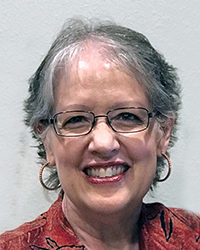

by Aleta Samford
Synopsis: It is easy to lament our lack of creativity, using it as a means of comparison with others and an excuse for not joining the ranks of Bible class teachers. Yet, this does not have to be the case.
Consider this quote from Teaching Juniors Both Heart and Head by Ruth Beechick (Accent Books, 1981):
Creativity is a much-overused word in our day. A teaching method or a teaching gadget is not creative just because someone labels it so. Only people are creative. You do your most creative teaching when you do what your heart says is right for your children. You know thoroughly the content you want to teach. You know your children well, too, and your lesson is prepared.Then comes a time in the classroom when things click just right. You seem to know what is in the children's minds, and you are sure you are getting through to them. You almost feel something passing from your heart and mind to the children's hearts and minds. At such a time, you are acting creatively.
Your heart and your knowledge merge in a creative teaching act.
I credit Ms. Beechick for helping me put into words why I do not bring displays of decorative bulletin boards or crafty handouts when I present my lessons on "The Principles of Teaching." These things do not define creativity. These things are the tools you discover once the lesson speaks to you; once you observe the text, collect the details, and unlock your creative juices yourself. Showing you my ideas would only disrupt your own.
We all can be creative. For further emphasis on this point, please consider these thoughts from "The Mysterious Creative Process," by Ruth Slottag, printed in Gospel Teacher (Issues 13 and 16, 1979), edited to fit this format:
Another aspect of creativity that is perhaps the most mysterious of all is the subconscious mind. The subconscious is your mind's greatest workhorse. Here's how it works:First, the larger the reservoir of useful information and attributes stored by your conscious mind, the more alternatives and ideas your subconscious tends to generate. Ideas may pop into consciousness anytime—maybe even during your sleep.
Second, creativity involves a positive mental attitude. Being confident that your subconscious can meet challenges seems to help guarantee success. Success breeds confidence, and the more confidence you have, the greater your potential for creativity.
The act of creativity is not limited to a chosen few. We all have powers of imagination; however, few people make maximum use of their creative talents. To make the creative process work for you, be familiar with the three stages of development:
1) Observation is the first step and key that unlocks the door to creativity. It's detecting the differences and seeing the significant and the important. It's finding out things for yourself and opening your senses to the world around you—seeing, hearing, smelling, tasting, and feeling. Questioning yourself about everything you observe develops a subconscious stocked with a wide variety of information.
2) Determination of a strong quality or attribute through observation that you are going to apply to something else. If it benefited you, how can it benefit others, as well?
3) Application of that attribute to something else. Sparks of creativity should occur at this point, making clear in your mind the best way to get the point(s) across.
If the creative processes become bogged down, stand back and let the situation take over. You may want to get away from it for a while and go to another project. (Working with several creative projects at once can stimulate, rather than confuse.) The mind needs to have time for daydreaming for the new idea to emerge.
This month's article, when coupled with the one from May 2019, is intended to help you generate the most effective lessons possible for your children; to help them enter the biblical world with as much excitement as you discovered while preparing the lessons. No matter the age level, if you will take the time to observe the text through the simple methods that I have suggested, and if you honor your subconscious mind by starting early (i.e., don't wait until the last minute to start preparing), you will have more ideas than you'll have time!
Author Bio: Aleta is the wife of Gene Samford who preaches for the church that meets in Kemp, TX. She has taught Bible classes for forty-four years and, to help other women join the ranks, presents a series of lessons based on God's word, The Seven Laws of Teaching, and her own experiences. She can be reached at aletas10@sbcglobal.net.
